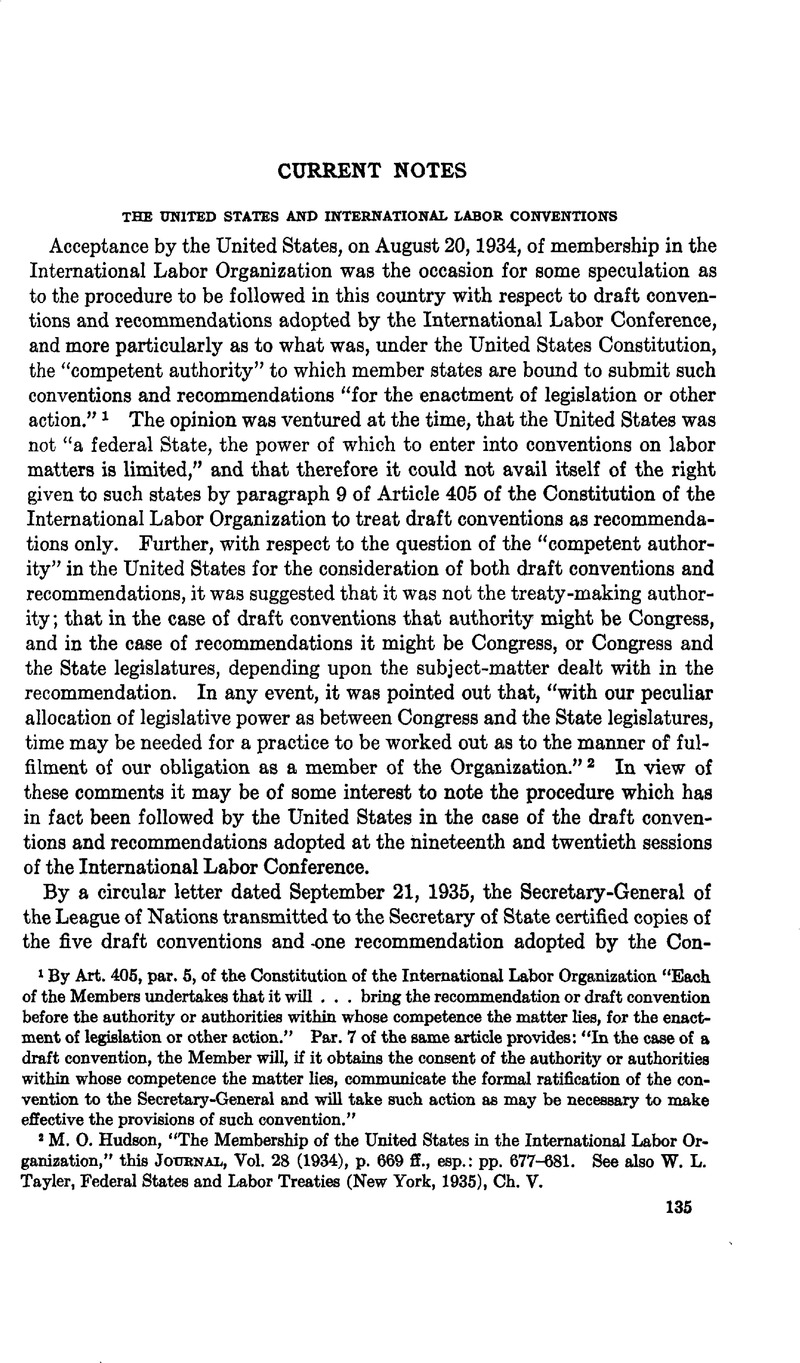Published online by Cambridge University Press: 12 April 2017

1 By Art. 405, par. 5, of the Constitution of the International Labor Organization “Each of the Members undertakes that it will … bring the recommendation or draft convention before the authority or authorities within whose competence the matter lies, for the enactment of legislation or other action.” Par. 7 of the same article provides: “In the case of a draft convention, the Member will, if it obtains the consent of the authority or authorities within whose competence the matter lies, communicate the formal ratification of the convention to the Secretary–General and will take such action as may be necessary to make effective the provisions of such convention.”
2 Hudson, M.O., “The Membership of the United States in the International Labor Organization,” this JOURNAL, Vol. 28 (1934), p. 669 ff., esp.: pp. 677–681 Google Scholar. See also Tayler, W. L., Federal States and Labor Treaties (New York, 1935), Ch. V.Google Scholar
3 U. S. Treaty Information, Bulletin No. 73 (Oct., 1935), p. 15. The conventions and the recommendation were: Draft convention concerning the employment of women on underground work in mines of all kinds; Draft convention limiting hours of work in coal mines (revised 1935); Draft convention concerning the reduction of hours of work to 40 a week; Draft convention concerning the estabhshment of an international scheme for the maintenance of rights under invalidity, old–age, an widows and orphans' insurance; Draft convention concerning the reduction of hours of work in glass–bottle works; Recommendation concerning unemployment among young persons.
4 U. S. Congressional Record, 74th Cong., 2d Sess., Vol. 80, pt. 9, pp. 9925, 9999.
5 U. S. Treaty Information, Bulletin No. 84 (Sept., 1936), p. 17. The conventions and recommendations were: Draft convention concerning the regulation of certain special systems of recruiting workers; Draft convention concerning the reduction of hours of work on public works; Draft convention concerning annual holidays with pay; Recommendation concerning the progressive elimination of recruiting; Recommendation concerning annual holidays with pay.
6 U. S. Congressional Record (daily edition), 75th Cong., 1st Sess., Vol. 81, No. 121, pp. 8333, 8395.
7 On July 28 Senator Pittman, Chairman of the Senate Committee on Foreign Relations, asked that the President's “communication, together with the English text of the accompanying papers, be printed as a Senate document.” No objection was made, and it was so ordered. Ibid., Vol. 81, No. 143, p. 10017.
8 As distinguished from municipal action taken on the product of the Labor Conferences, the international participation and cooperation of the United States in the various activities of the I.L.O. seem to have been all that could be desired. See, e.g., “The United States and World Organization During 1936,” International Conciliation No. 331 (June, 1937), pp. 597–609; also ibid., No. 321 (June, 1936), pp. 318–323.
9 See note 2, supra.